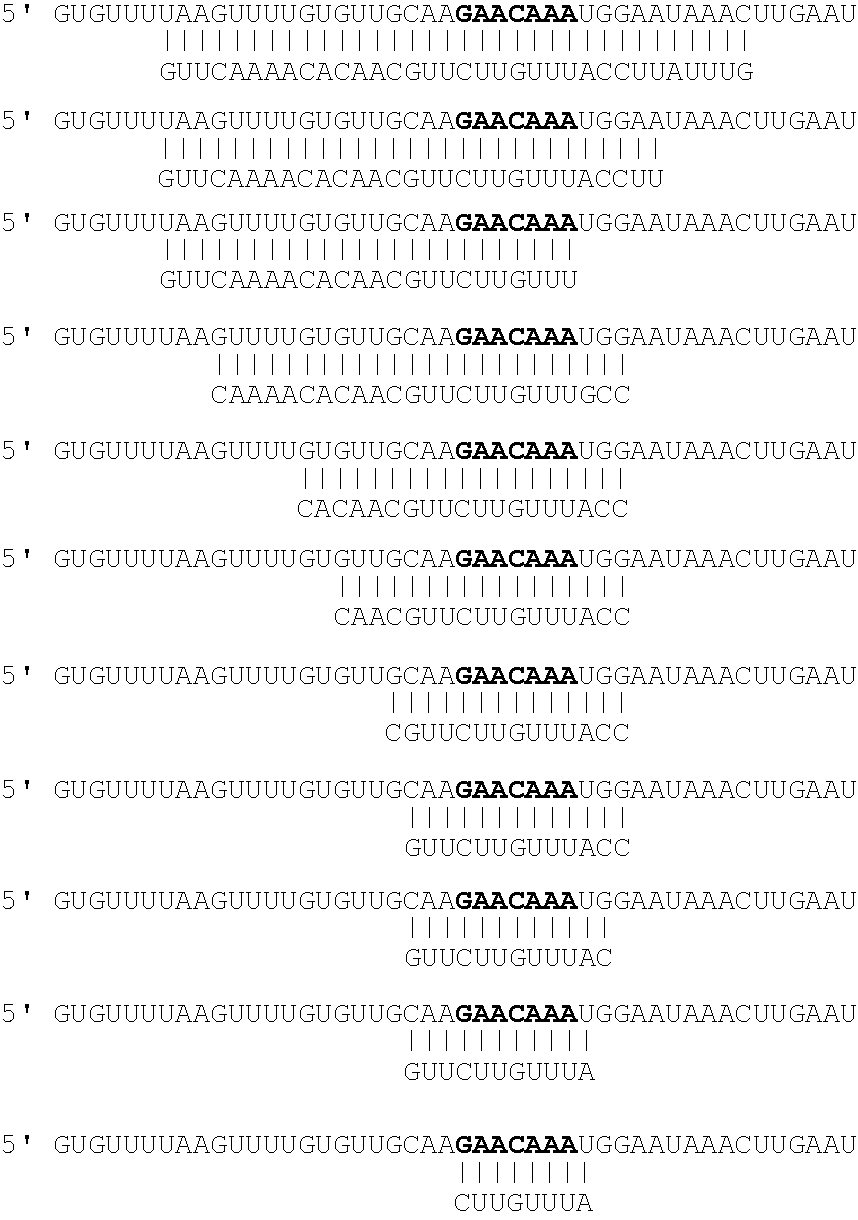Oligonucleotides for modulating target RNA activity
a technology of oligonucleotides and target rna, which is applied in the field of oligonucleotides, can solve the problems of preventing microrna regulation of the target rna, causing off-target effects, and simple base pairing is not enough to achieve the regulation of a given target mrna, etc., and achieves reduced off-target effects, reduced rna regulation, and reduced effect of
- Summary
- Abstract
- Description
- Claims
- Application Information
AI Technical Summary
Benefits of technology
Problems solved by technology
Method used
Image
Examples
example 1
An Xmir (Blockmir) Targeting Mtpn Useful for Treatment of Diabetes
[0110]It has been demonstrated that mir-375 is a regulator of pancreatic island insulin secretion, and that Myotrophin (Mtpn) is a target of mir-375 regulation (Poy M N, 2004). Further, it has been shown that siRNA inhibition of Mtpn mimics the effects of miR-375 on glucose stimulated insulin secretion and exocytosis. Thus, it was concluded by the authors that miR-375 is a regulator of insulin secretion and may thereby constitute a novel pharmacological target for the treatment of diabetes.
[0111]Here we provide Xmirs that can regulate Mtpn expression by inhibiting mir-375 regulation of Mtpn activity on the 3′UTR of the Mtpn mRNA.
[0112]The relevant portion of the target mRNA is:
5′ GUGUUUUAAGUUUUGUGUUGCAAGAACAAAUGGAAUAAACUUGAAU
[0113]The anti-seed sequence is shown in bold. This target region of the target RNA can be identified e.g. by searching the target RNA for anti-seed sequences. Or the target region can be found us...
example 2
Xmirs Targeting TGF-Beta and SMAD3 for Treatment of Herpes-Simplex Virus Infection
[0126]Recently it was demonstrated that Herpes simplex virus-1 encodes a microRNA that enables the virus to establish a latent infection (Gupta A, 2006). The microRNA that was termed mir-LAT was found to regulate TGF-beta and SMAD3, and thereby affect the ability of the cell to undergo apoptosis, the usual process by which an infected cell self-destructs in order to prevent production of viral progeny. Thus, it is of interest to be able to block the regulatory activity of mir-LAT on the expression of TGF-beta and SMAD3.
[0127]The sequence of the target region of the TGF-beta mRNA is:
5′ AGGTCCCGCCCCGCCCCGCCCCGCCCCGGCAGGCCCGGCCCCACC
[0128]The sequence of mir-LAT is:
5′ UGGCGGCCCGGCCCGGGGCC
[0129]Thus, the following complex may be formed:
[0130]A series of Xmirs can be designed as was also done in the previous example. The lower strand is the Xmir shown in the 3′-5′ direction and the upper strand is the target...
example 3
An Xmir Targeting HCV for Treatment of Hepatitis C Infection
Background
[0134]It has been demonstrated that mir-122 modulates Hepatitis C virus RNA abundance by facilitating replication of the viral RNA (Jopling C L, 2005). The HCV genom comprises a conserved antiseed sequence capable of base pairing with the seed sequence of mir-122 in both the 3′noncoding region and the 5′noncoding region.
[0135]Further, it was demonstrated that the level of HCV viral replicon RNA was reduced by app. 80% when mir-122 was inactivated by a so-called antagomir.
[0136]A genetic interaction between mir-122 and the 5′noncoding region of the viral genom was revealed by mutational analysis of the predicted micro RNA binding site and ectopic expression of mir-122 molecules containing compensatory mutations.
[0137]The authors suggest that an antagomir targeting mir-122 may be used for antiviral therapy.
Blockmirs Targeting HCV
[0138]The sequence of the target region (anti-seed sequence is bold) in the 5′noncoding ...
PUM
| Property | Measurement | Unit |
|---|---|---|
| Biostability | aaaaa | aaaaa |
| Affinity | aaaaa | aaaaa |
| Bioavailability | aaaaa | aaaaa |
Abstract
Description
Claims
Application Information
 Login to View More
Login to View More - R&D
- Intellectual Property
- Life Sciences
- Materials
- Tech Scout
- Unparalleled Data Quality
- Higher Quality Content
- 60% Fewer Hallucinations
Browse by: Latest US Patents, China's latest patents, Technical Efficacy Thesaurus, Application Domain, Technology Topic, Popular Technical Reports.
© 2025 PatSnap. All rights reserved.Legal|Privacy policy|Modern Slavery Act Transparency Statement|Sitemap|About US| Contact US: help@patsnap.com



